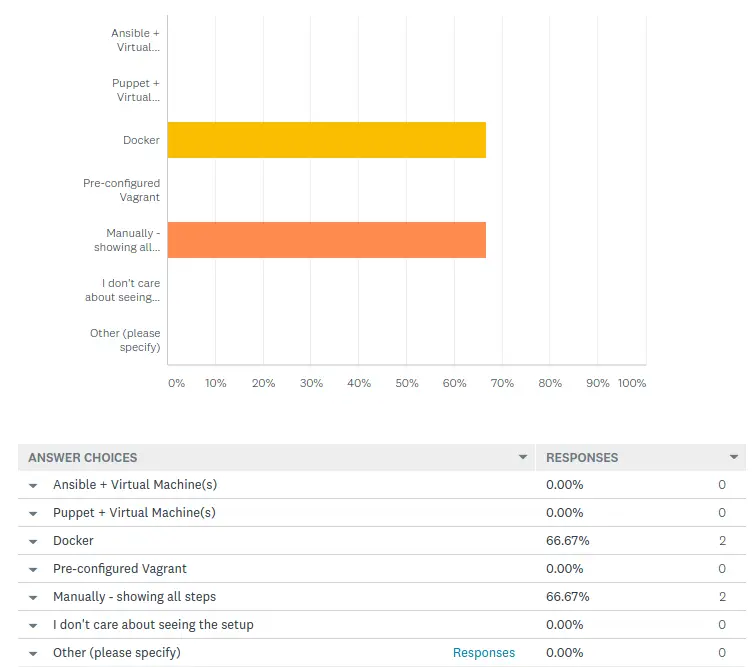Last week I asked the following question:
Thinking about a project where you would need to use RabbitMQ, or Redis, or the ELK stack, or any other potentially complex external software, how would you prefer to cover the setup of this stack?
I know this mail out doesn’t go to a huge number of people, but I was hoping for a slightly better response rate than what I received.
As it stands I got 4 replies.
Sad trombone.
As the survey was anonymous, I unfortunately cannot personally contact each respondent to say thank you – so if you did reply then sincerely, thank you 🙂
Still, here are the results:

This is still very useful to me. It’s roughly in line with what I was thinking.
Let’s take a video series on integrating RabbitMQ with Symfony as an example.
There’s broadly three parts (in my mind) to a series like this:
- Server setup
- Basic usage
- Advanced usage
For me, the hardest part is the server setup phase.
There’s a ton of ways to setup a server. To what level do I cover this part? Should it be good enough to get started, or a complete build that’s secure and ready for production?
Docker is fairly straightforward (to a point) – something like me sharing a docker-compose.yml file, and then you running docker-compose up. That assumes you’re comfortable with Docker, and have Docker install, of course 🙂
Manual set up is a little more involved. What OS are we installing on? Will it be on a VM, or on a VPS like Digital Ocean or Linode? How to do we reproduce this build when moving into production? Etc.
Anyway, lots of new things for me to ponder. I really do appreciate knowing this stuff, even if it does open up further questions.
Again, thank you 🙂
Video Update
This week saw three new videos added to the site.
We are continuing on with our Wallpaper website, specifically this week wrapping up the test-driven approach to wallpaper file uploads.
I’m genuinely curious as to your opinions on this process so far. I find it somewhat amusing that we covered wallpaper file uploads without tests in just two videos, and the very same process when testing took five videos.
The underlying differences and resulting system design are definitely different. But are they different good, or different bad? Is the system now easier or harder to understand?
These aren’t questions that I have a definitive answer too, by the way.
Next up we are going to repeat this process for both ‘Edit’ and ‘Delete’.
This will bring us almost to a close of the first part of this series.
Until next week, have a great weekend and happy coding.
Chris